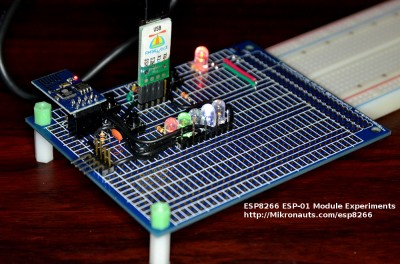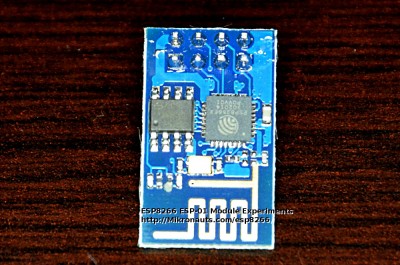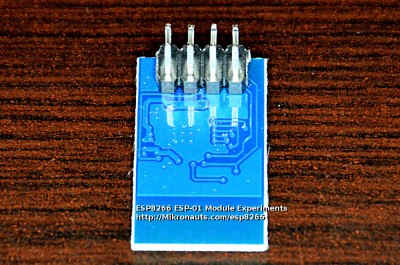ESP8266 ESP-01 module experiments
The ESP8266 based WiFi modules introduced last year have had an enormous impact on IoT, making WiFi connected sensor nodes much easier – and much cheaper.
(click on image for larger version)
Pretty much all makers, hobbyists and other users have loved the introduction of these very low cost modules. (I’d hazard a guess that Texas Instruments, Microchip, Wiznet and others were a lot less happy about the low cost of the ESP8266 and the speed of its adoption.)
I’ve been keeping an eye on the various ESP8266 modules coming to market since I read about them on Hack A Day back in August of last year, and after joining the community forum.
I started ordering in modules December last year – I mean how can you go wrong with <$5 little WiFi computers?
(An inexpensive ESP-01 module – click on image for larger version)
I installed the tool chain, played with it the ESP8266 a bit earlier this year, but did not have time to dig really deep into it.
Once I started reading about the Arduino environment becoming available, I thought ok, this will make the modules even more popular.
Then last week I found out about Neil Kolban’s “The ESP8266 Book”. and there went my weekend.
(here is the link to Kolban’s excellent free e-book about all things EPS8266)
Then I noticed jeelabs ESP-Link
That was the proverbial final straw.
There went my weekend!
(Back of an ESP-01 module – click on image for larger version)
In the past, I stuck an ESP-01 module into two stacking headers, which were plugged into a breadboard.
Ugly, but functional.
This time, I wanted to make a small, simple development board so I could start trying the different tool chains.


